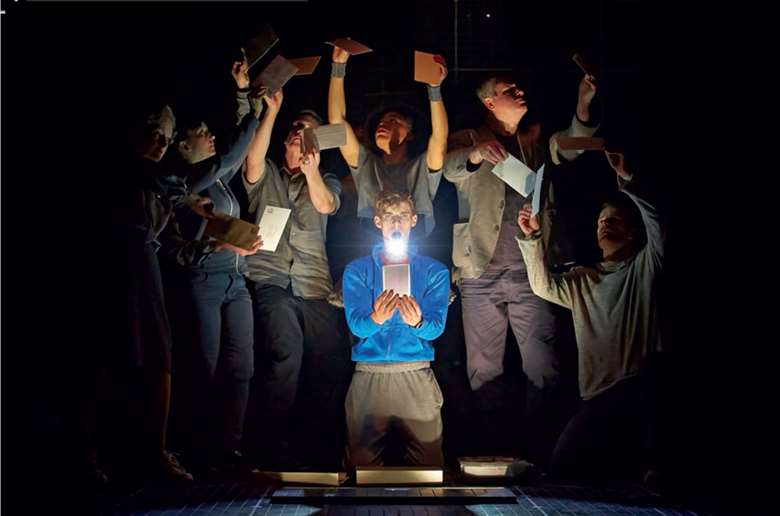A practical education
Heidi McEntee
Sunday, December 1, 2019
Heidi McEntee is Senior Standards Verifier for Pearson's BTEC Dance. She introduces the BTEC Tech Award in Performing Arts for students at KS4

BRINKHOFF/MOEGENBURG
The BTEC Tech Award in Performing Arts is a new qualification introduced in 2017 for students aged 14–16. It is designed for schools' Key Stage 4 delivery and can be easily embedded into a broad and balanced curriculum while also being recognised on all important Performance Measures. Pearson certificated 19,000 learners in the summer of 2019. A full range of achievement was seen, from Level 1 Pass through to Level 2 Distinction*; all grades which successfully translate into the numerical grading system for GCSEs.
To summarise the BTEC Tech Award in Performing Arts, four words come to mind: flexible, accessible, challenging and exciting. Freedom is also a key word: freedom to explore, to teach and to personalise the course to your learners. The final word that comes to mind is interrelationships, but that's another article.
Future professionals
The course consists of three components used as building blocks to guide learners on a journey to becoming thinking performers, theatre makers, designers and choreographers. Learners begin by engaging with professional works (Component 1) and progress to developing and applying either performance or design skills to existing work (Component 2). Finally, they use the knowledge and skills gained either to create and perform their own work or, as designers, create original designs in response to a brief (Component 3).
It is not a GCSE, rather it provides an alternative which bridges the vocational and academic. BTEC qualifications ask learners to apply skills and knowledge within a vocational context. For BTEC Performing Arts this is often a fictional scenario involving a professional performer; the benefit being that students can see the purpose of an assignment in relation to working professionally in the industry. Scenarios used in this course include audition prep, creating theatre programmes and producing a performance from scratch to secure a commission.
The main difference between this and the traditional GCSE is that it combines internal and external assessment, which means some work is assessed by the teacher in the centre (Components 1 and 2) and some work is assessed by trained examiners (Component 3). Both approaches have in place rigorous quality assurance measures to ensure standards are met and maintained, but by including internal assessment, there is some freedom in assessment planning, which can reduce the impact of end-loaded assessment.
A broad offering
There is real freedom and flexibility across pathways which come under the heading of performing arts. Students can develop their skills as either actors, dancers or musical theatre performers, but there is opportunity to venture across the performing arts: physical theatre, circus or opera, to name a few. A generic performing arts pathway would cater to a multi-disciplined cohort. Likewise, each year is different, and a group of traditional actors could be followed by a group with a love of jazz hands. The course can be tailored to reflect the group's strengths and interests.
The focus and design of the course is up to the assessor. In Component 1 learners explore three professional works and their different approaches to creating theatre. They then focus on one professional work either to perform or produce designs for in Component 2. The choice of repertoire to study is completely up to the assessor and will shape the course and how the learners create their own work. The only stipulation is that it is ‘work created by and for professionals.’ The performance world is then our oyster and we can draw on our own experience, on available resources, on what's on at the local theatre or what's popular among learners.
The qualification structure allows learners who are not strong performers but have a love of performing arts to achieve. Effective self-evaluation can boost a low grade in practical work. To support less confident performers, choose a script with more accessible language and easy to grasp concepts and stakes. Likewise, learners who have the maturity and skills to perform Ibsen or Beckett should go for it.
In Component 3, learners respond to an externally set brief and produce a group devised performance of 7–15 minutes alongside three written activities to explain their process, each 600–800 words. Designers present their designs for the performance in a five minute presentation. Learners had so much to say about their own work that we have recently increased the upper limit of the word count. The length of the performance has also been adjusted to accommodate intense Shechter inspired performances. The calibre of creative work was high in this last exam series and it is exciting to see future theatre makers begin their journey as artists.
No academic year has ever gone to plan. Therefore, a course that can offer a level of flexibility and accessibility can give peace of mind. The BTEC Tech Award in Performing Arts allows for challenge and encourages the creativity of the next generation. For more information contact teachingperformingarts@pearson.com.

